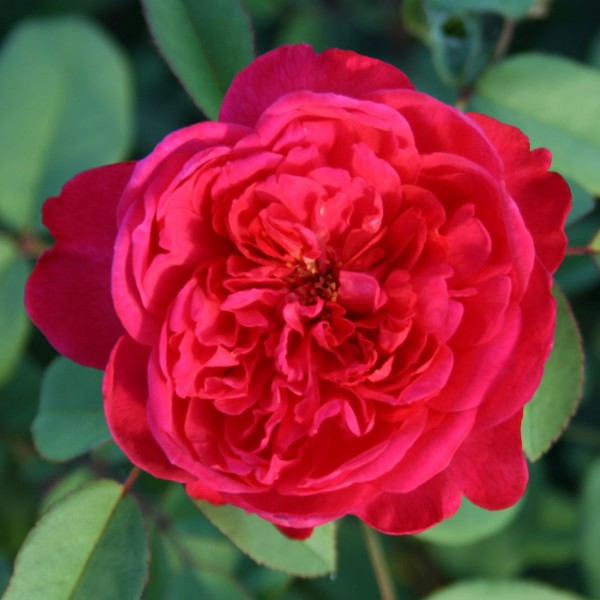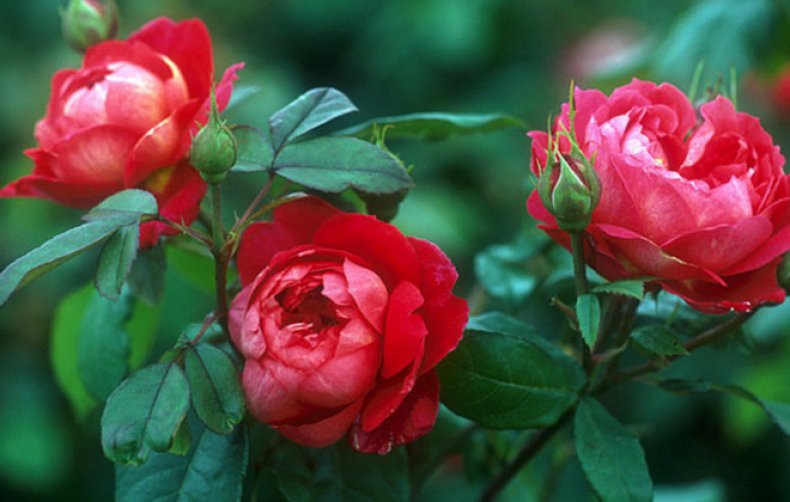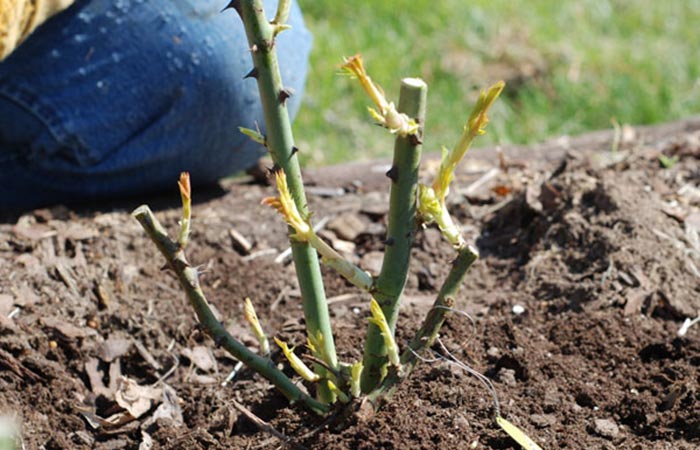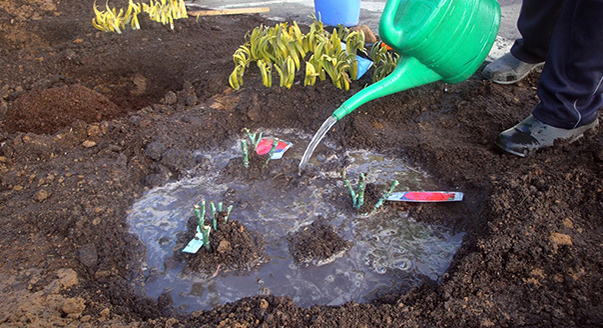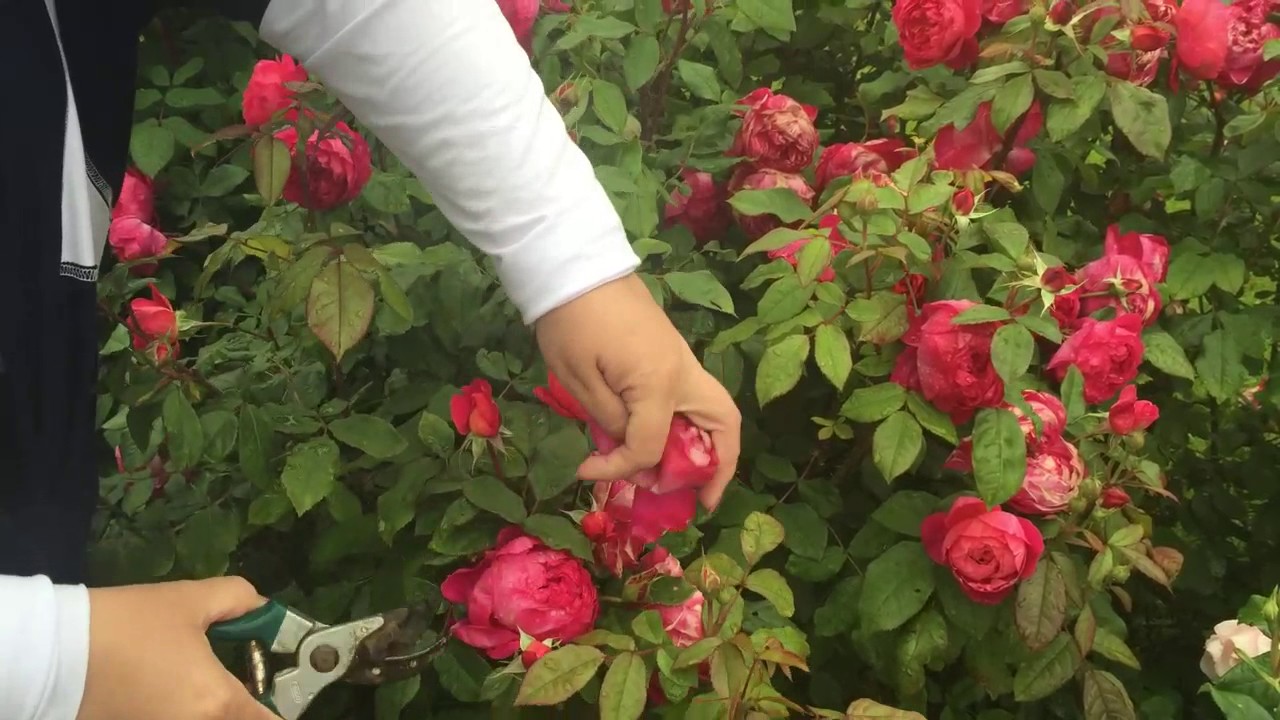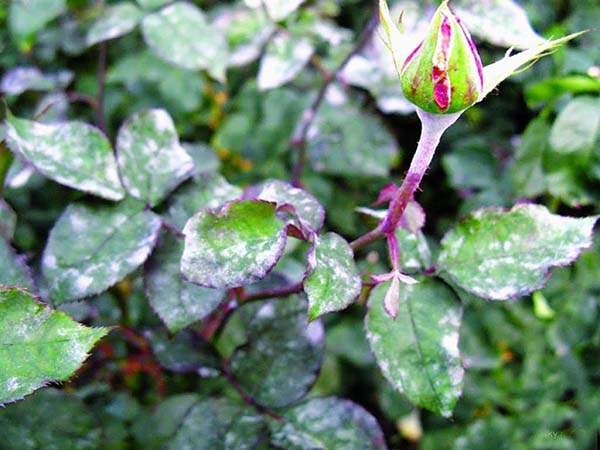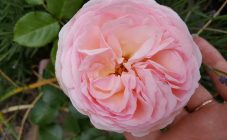Content:
Roses are wonderful decorations for any garden. Their rich color buds are in great harmony with bright green bushes. For many gardeners, the cultivation of these flowers is a dream, but fears that roses may not take root in the changeable climatic conditions of Russia are stopped. Indeed, a warm climate will be most comfortable for most plants. But thanks to the efforts of stubborn breeders, varieties have appeared that are quite resistant to cold weather, for example, the Benjamin Britten rose.
Variety history
Benjamin Britten is a representative of the English rose group. British breeder Sir D. Austin, who bred this variety, pursued the goal of preserving the beauty of the buds, characteristic of the old varieties, and the richness of their aroma. He also dreamed of making them less susceptible to temperature changes and disease. Benjamin Britten - a rose to be proud of, appeared in 2001. It is the result of crossing Charles Oustin and other varieties.
Working title rose Benjdamine AUSencart (English).
Features:
This variety has all the characteristic features of English roses:
- Frost resistance.
- Resistant to most diseases.
- Saturation of aroma.
- Decorative look.
- The splendor of flowering.
In addition, the variety is popular due to:
- rapid growth;
- lush bloom all season;
- color exclusivity;
- wine-fruity notes in the aroma.
Description
This variety is a type of shrub with semi-leafy forms - Shrub. The difference is that when landscaping, roses can be used not only horizontally, but also vertically.
The English rose Benjamin Britten can rightfully be called a powerful plant, since the average height of the bush grows about 90-140 cm, and sometimes up to 200 cm.The width of the bush reaches 70 cm.
According to the description of the breeder himself, the color of the variety is brick-red. However, it appears only at the beginning of flowering, then it becomes crimson with a possible shade of orange. This color is not found in any variety of English roses.
The flowers of Benjamin rose are quite large (10-12 cm) and are often arranged in whole clusters. The bud, as it opens, gradually exposes a cupped rosette. When yellow stamens are visible, shading the bud, this means that the plant has begun to fade.
The bush of such a rose will bloom without ceasing all season, and exude aromas of pears and wine.
Landing
Benjamin Britten is a rather unpretentious variety. But despite this, planting it anywhere is absolutely unacceptable, just like the lack of plant care.
The best time to plant roses is spring.
When planted in spring, the rose bush will have time to strengthen and successfully survive the winter. At the same time, certain conditions must be observed:
- Before planting, the soil is prepared as follows: first it is loosened, then fertilizers mixed with humus are added, then acidity is adjusted. For roses of this variety, a neutral pH level is optimal.
- Then you need to dig a hole measuring 50 * 50 cm. A distance of at least half a meter is left between the bushes.The pit must be prepared in 24 hours. A bucket of water is poured into it and the next day a bush is planted.
- To prepare the seedlings, they are kept in a root-forming mixture, and then immersed in settled water for a day. After these procedures, the roses are ready for planting.
- During planting, the bushes should be kept straight, sprinkling with earth mixed with bone meal and humus.
- The seedling is grafted at a depth of about 7-10 cm underground.
- The next day, the bushes are spud and watered.
Roses prefer loam with good drainage. A pH level of 5.5-6.5 will be most optimal for them. The acidity can be easily adjusted using specialized tools. Low is easily corrected by introducing 0.5-1 tbsp. lime, and high - peat or humus from needles.
Clay soil and sandy soil are also subject to correction. At a high level of clay, it is diluted with sand, and with an increased content of sand - with clay. The roots of the plant constantly need oxygen, so the soil around the bush must be loosened periodically, especially after rains.
Further care
No species of English roses likes high humidity levels, so you need to constantly monitor this indicator.
Watering
The rose needs abundant watering, but only when the top layer of earth around the bushes dries up. After rains, moisture is shaken off them, it is advisable to get rid of dew in the same way in order to prevent rotting.
Top dressing
After the plant wakes up from winter, you need to feed it with special fertilizers that are suitable for roses. During the period of active leaf growth, which usually occurs in June, fertilizers with nitrogen need to be applied, and when the buds begin to form, then fertilizing with phosphorus and calcium is carried out.
At the end of the season, roses are fed with potassium fertilizers. Experienced gardeners prefer to use ASB Greenworld especially for roses. One pack is enough for 100 bushes. Used once every 3 months. Differs in its long-term action.
Pruning
Benjamin Britten does not need pruning, as the rose itself forms a beautiful and neat bush. From time to time, you only need to slightly direct the branches of the bush to form the desired look.
If desired, you can shorten the shoots 2 times, then the bush will still bloom profusely with large flowers, but it will not grow too large. If you selectively shorten the shoots by 1/3, you will get a tall bush, covered with flowers of different sizes: from small to medium.
This pruning is done in the spring before the buds appear. In addition to weak pruning, pruning should also be done for prevention. It is needed in the spring, around April, and after the bush has bloomed in the fall. At the same time, those shoots that look weak, dried out or sick are removed.
It is also recommended to remove those stems that are already stiff. Only planted flowers, as a rule, are cut strongly, and already rooted ones are thinned out. In this case, no more than 3-4 stems are left. Shortening of the shoot is similar to a weak pruning.
Wintering
This variety is frost-resistant.
In the mild climate in its homeland in England, the Benjamin rose can winter without additional shelter. But for more severe climates, it is better to monitor the weather conditions and how other plants behave.
If weather forecasters promise a cold winter, then as a precaution, the roots are dug in, and the plant itself is covered. The shelter is removed very carefully to avoid damage to the bush and only when spring comes.
Diseases and pests
This variety is bred as resistant not only to frost, but also to various diseases and parasites. Ailments that can affect a rose bush are fungal growths such as black spot and marsonina. They are, as a rule, subject to the leaves of the plant, and sometimes the stems.
They appear on the outside of the leaves as round spots of purple-white color. After some time, the spots begin to turn black, and dark veins can be seen on them. The affected leaf changes its color to gray-brown, curls up, and then completely falls off.
This fungus spreads from below, it can appear from high humidity. If the plant bush is weak, then the first signs of the disease can be seen around June-July, and if it is strong, then around August or September.
As a preventive measure, gardeners recommend using copper sulfate. It irrigates the bushes 2 times a year: in the spring before the first buds and in the fall during the preparation of plants for wintering. To do this, 50 g of vitriol is diluted in 1 liter of water. You can spray the bushes with such a simple remedy as onion peel. You need to brew 30-40 g and leave for 6-8 hours. You can even water the plants with this infusion.
From the foregoing, we can conclude that it is quite simple to grow a beautiful, healthy and wildly blooming fragrant bush Benjamin Britten, the main thing is to follow the rules of caring for this beautiful English rose!
